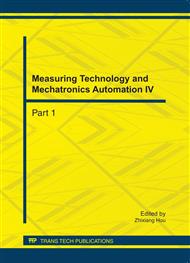p.15
p.20
p.25
p.30
p.34
p.38
p.42
p.46
p.50
ADAMS-Based Double Wishbone Suspension Motion Simulation and Optimization
Abstract:
It uses ADAMS software to establish the double wishbone suspension kinematics analysis model to analyze the rules of front wheel alignment parameter changing with wheel run-out and evaluate the rationality of the suspension system data. For the problem of too much side slippage and serious abrasion of front wheel of suspension, it carries out optimization computing for the suspension based on the target of minimizing the front wheel side slippage during wheel run-out. And the optimization result improves the suspension system performance in a certain extent.
Info:
Periodical:
Pages:
34-37
Citation:
Online since:
October 2011
Authors:
Keywords:
Price:
Сopyright:
© 2012 Trans Tech Publications Ltd. All Rights Reserved
Share:
Citation:


